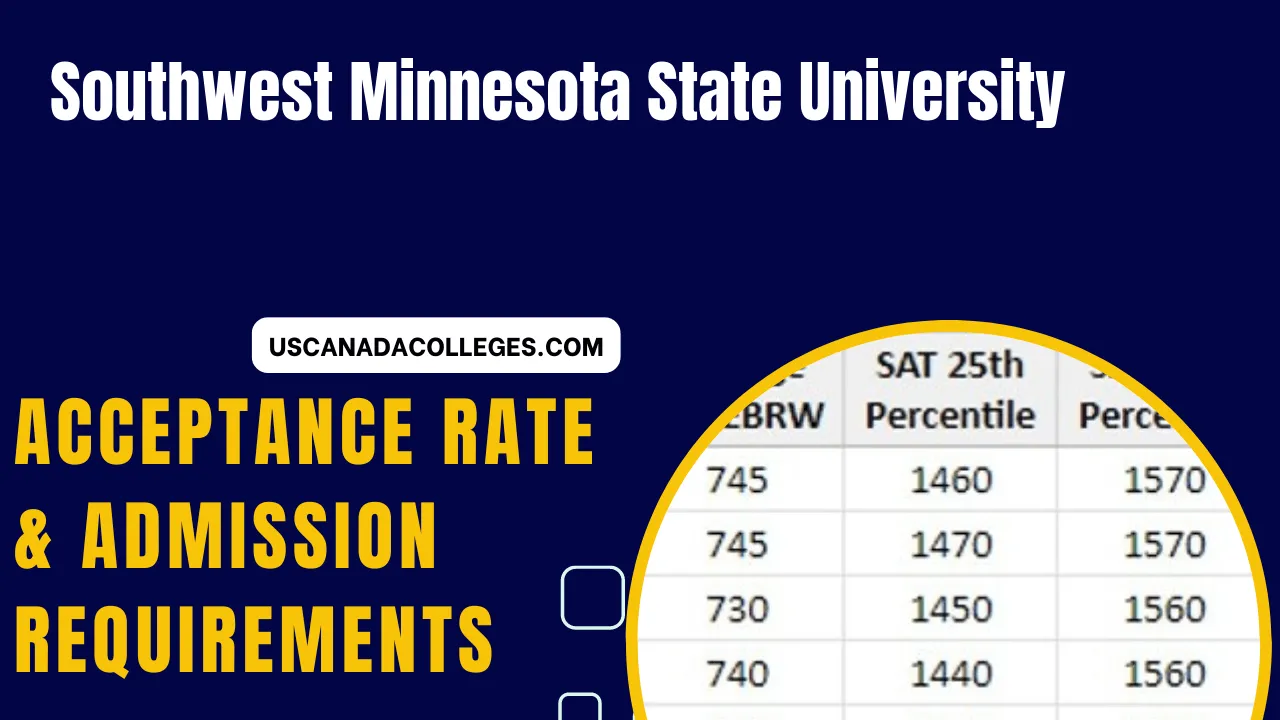Southwest Minnesota State University is not selective in its admission process. The acceptance rate of Southwest Minnesota State University is 91.03%, meaning that approximately 91 out of every 100 applicants are admitted.
Although the acceptance rate is high, you still need to convince the admission staff that you are both mentally and physically fit for the course of studies. More importantly, your GPA, class performance, SAT/ACT scores, and IB or AP courses can help your application stand out. If you did not perform well in one area, you have a chance to showcase your strengths in other areas, as Southwest Minnesota State University is not very strict in its admissions process, so improving other areas will help you secure admission.
You need to perform well in academics and other activities. However, since the acceptance rate is above 50%, you still have a chance even if your GPA is not excellent. You can compensate for a lower GPA by scoring high on the SAT, ACT, and taking IB or AP courses.
A well-written letter of recommendation, participation in co-curricular and extracurricular activities, and strong interpersonal communication skills can enhance your chances of admission.
Southwest Minnesota State University Admission Requirements
Can I Get Into Southwest Minnesota State University Without SAT Or ACT?
Southwest Minnesota State University recommends that students provide admission test scores (SAT/ACT) during the application process. Although applications can be submitted without test scores, it is highly advisable to take the test and submit your scores, as recommended. Plan early and appear in upcoming SAT/ACT tests. Check the test schedule and plan accordingly. It is advisable to take the test multiple times unless you score well above the average SAT/ACT scores of admitted students, as shown below. Normally, students may take the test 4 to 5 times to improve their scores.
Southwest Minnesota State University SAT Requirements
Each school has different requirements for SAT and ACT testing. Only a few schools require the SAT or ACT, but many consider your scores if you choose to submit them. The test score policy is already mentioned.
Southwest Minnesota State University Profile
Name: Southwest Minnesota State University
Accredited by: Higher Learning Commission (NCACHE)
How Much Does a Degree from Southwest Minnesota State University Cost?
The average annual cost of a degree at Southwest Minnesota State University is USD: 20989. Since most students receive Pell Grants and Federal Grants, the average annual net price a student has to pay at Southwest Minnesota State University is USD: 13683
How Can I Get a Scholarship?
10.21% of the students receive Pell Grants, and 14.9% receive federal grants. So, it is a wise choice to attend Southwest Minnesota State University and apply for Pell or federal loan grants.
At Southwest Minnesota State University, you should have no problem receiving any scholarship from the federal government. Be sure to fill out the FAFSA application form as early as possible and list Southwest Minnesota State University as your choice on the form.
How Much Does a Southwest Minnesota State University Graduate Earn?
The average annual salary of a Southwest Minnesota State University graduate 4-6 years after graduation is USD 46644. On average, a Southwest Minnesota State University graduate earns this amount 10 years after enrollment (4-6 years after graduation).
The average annual income of a graduate in the United States is USD 36,834.
Southwest Minnesota State University Degree Programs
Southwest Minnesota State University offers following degree programs.
Bachelor Programs
- Accounting
- Agricultural Business and Management
- Agricultural Public Services
- Agriculture
- Applied Mathematics
- Biology
- Business Administration
- Chemistry
- Communication and Media Studies
- Computer Science
Full list of All degree programs offered by Southwest Minnesota State University.
Data on this page is sourced from IPEDS, College Scorecard, US Department of Education, Institute's official websites and printed material as well as additional publicly available sources.
